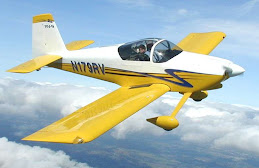Match-drilled the Right HS. Disassembled. Prepared skin edges. Cut plastic from around holes on the outside of the Right HS skin. Deburred and dimpled the skin.
 I ran into another problem this evening with the centre HS 905 nose rib on the right HS. It seems to have moved as I was changing clecoes during the match-drilling operation and I have four elongated holes. Using a digital calipers, I get a measurement of 0.1135 inches by 0.098 (the narrow dimension is correct for a #40). The corresponding holes in the skin are okay. I will have to consult Vans about this.
I ran into another problem this evening with the centre HS 905 nose rib on the right HS. It seems to have moved as I was changing clecoes during the match-drilling operation and I have four elongated holes. Using a digital calipers, I get a measurement of 0.1135 inches by 0.098 (the narrow dimension is correct for a #40). The corresponding holes in the skin are okay. I will have to consult Vans about this. The DRDT2 dimpler came into its own for the first time this evening . I clamped the flat metal 'leg' at the rear to the table, which improved stability. The carpeted table also works quite well, sliding in and out nicely and adding support where you need it on larger skins like this. It does tip up when extended all the way forward because I have it on a 2ft deep table, which is not deep enough. I should have moved the other table in front of this one to give me 4ft of depth but I have the two tables set level and I did not want to disturb that. Instead I used a piece of scrap timber between the back of the table surface and the top arm of the dimpling frame, which prevented it from tipping.
The DRDT2 dimpler came into its own for the first time this evening . I clamped the flat metal 'leg' at the rear to the table, which improved stability. The carpeted table also works quite well, sliding in and out nicely and adding support where you need it on larger skins like this. It does tip up when extended all the way forward because I have it on a 2ft deep table, which is not deep enough. I should have moved the other table in front of this one to give me 4ft of depth but I have the two tables set level and I did not want to disturb that. Instead I used a piece of scrap timber between the back of the table surface and the top arm of the dimpling frame, which prevented it from tipping.
 The results are really excellent. It just feels much better to use than whacking your skins with a hammer using the normal C frame dimpler. The motion is like pulling pints of Guiness, which I suppose is genetically implanted in all of us Irish. It is much faster and the quality is consistent. The downside is that it can't be used for riveting, unlike the C frame model. However, I think the speed and repeatable quality is a fair trade for this very rare requirement.
The results are really excellent. It just feels much better to use than whacking your skins with a hammer using the normal C frame dimpler. The motion is like pulling pints of Guiness, which I suppose is genetically implanted in all of us Irish. It is much faster and the quality is consistent. The downside is that it can't be used for riveting, unlike the C frame model. However, I think the speed and repeatable quality is a fair trade for this very rare requirement.


No comments:
Post a Comment